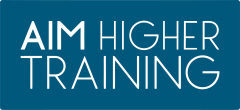Navigating the Talent Hunt: Modern Recruitment Strategies for Success
In the ever-evolving world of recruitment, staying ahead of the curve has never been more crucial. The current employment climate presents employers and recruiters with a unique set of challenges and opportunities. With the talent pool shifting, and job seekers possessing more power and options, developing effective recruitment strategies has become a complex task.
In this blog post, we’ll delve into the challenges of developing recruitment strategies in the current employment climate and explore some modern approaches for success.
The Shifting Talent Landscape
The first challenge that recruiters and employers face today is the shifting landscape of talent. In the wake of the digital age, job seekers are more connected and informed than ever before. They have access to a plethora of job search platforms, employer reviews, and industry insights, giving them the upper hand in the recruitment process. Recruiters and employers can adapt to this reality by:
Enhancing Employer Branding
Building a positive online presence through social media and employee testimonials can help attract top talent. This is a win-win approach for both recruiters and employers. By making your company one that gains great reviews shows that employees feel valued and enjoy working there.
Leveraging Technology
Utilising AI-driven tools for resume screening and chatbots for initial candidate interactions can streamline the recruitment process. However, be mindful that these approaches can also lead to missing top talent. It might be beneficial to use AI for the first sift of CV’s or applications and then apply a discerning human eye.
Engaging in Active Listening
Understanding candidate needs and expectations can help tailor job offers and enhance the candidate experience. Recruiters should take time to listen and get to know their candidates so they can support them to find work that fits in with their personal commitments and lifestyle.
The Remote Work Revolution
The COVID-19 pandemic accelerated the adoption of remote work, transforming the way organisations operate. While remote work offers flexibility and a broader talent pool, it also presents recruitment challenges, such as:
Assessing Remote Readiness
Ensuring candidates have the self-discipline and technical proficiency for remote work is crucial. You can establish this through various means as part of an assessment process or by organising an online call to measure proficiency with this sort of tech.
Effective Onboarding
Developing robust onboarding processes for remote hires to help them experience an effective induction and support their integration into the company culture is vital. Unfortunately this beat is often overlooked or skipped over for many new employees. Investing time and attention to detail during any induction or onboarding process saves lots of time later down the road and leads to your new employee performing well from the beginning of their contract.
Measuring Performance
Finding ways to effectively communicate with employees and develop effective tools to evaluate both office based and remote employees’ performance fairly and objectively. This is key to manage all your employees effectively so you can get the best out of them and more importantly they are clear about their role and responsibilities so they can produce their best work.
The Skills Gap Dilemma
The rapid pace of technological advancement has given rise to a skills gap, where the skills required for jobs are frequently changing. Recruiters and employers are now tasked with identifying candidates who possess the skills that align with the organisation’s needs. This can entail:
Continuous Learning
Encouraging ongoing skill development among employees to bridge the skills gap internally. Ideally this should be embedded into the culture of an organisation so that employees are supported to develop and grow both personally and professionally.
Collaborating with Educational Institutions
Partnering with universities and training providers to develop talent pipelines is key to supporting a culture of learning and development. Through such relationships staff soon embrace aspirational development, gain more self awareness and set themselves goals geared towards their own development.
Upskilling and Reskilling
Offering training and development programmes to current employees to keep their skills up to date. By adopting a culture of continual development employees understand the need to participate in mandatory training and eagerly embrace optional training and development.
The Diversity and Inclusion Imperative
Companies are increasingly recognising the importance of diversity and inclusion (D&I) in their recruitment strategies. D&I not only fosters innovation but also reflects a commitment to social responsibility. However, achieving a diverse workforce requires a clear plan towards:
Eliminating Bias
Implementing bias-reducing measures in recruitment processes to ensure fairness and equality. This should be embedded into the working culture so that employees feel comfortable challenging anyone who may say or do something that goes against this approach.
Creating Inclusive Cultures
Establishing inclusive workplaces where diverse voices are heard and valued. Organisations should place great emphasis on how different voices can be heard by supporting and sponsoring initiatives, events and activities that promote inclusivity.
Measuring Diversity and Inclusion Progress
Regularly tracking and analysing diversity metrics to ensure progress. By developing conscious and deliberate surveys for employees this can help to help them to raise awareness of such issues with organisations.
Navigating the talent hunt in the modern employment climate is indeed challenging, but it’s also an opportunity for growth and innovation. Recruiters and employers must adapt to the shifting talent landscape, embrace remote and flexible working as the new normal, address the skills gap, and prioritise diversity and inclusion.
By incorporating these elements into their recruitment strategies, organisations and employers can not only survive but thrive in the dynamic world of talent acquisition. The key to success lies in staying agile, responsive, and committed to nurturing talent for the future.
This article is the first in our series on addressing current issues within the workforce. Current issues in recruitment, retention and skills development offer big challenges for businesses and organisations. By developing a flexible employee centred approach which supports staff well-being and individual development organisations can attract, retain and develop the talent they need to help their businesses fly.
Am Higher Training supports businesses develop clear workforce strategies geared towards retaining and developing the staff they need to take their business forward in a competitive and fast moving world.
You can read more blog posts on personal and professional development, career progression and work-life balance on the Aim Higher Training blog. This is where we share advice and guidance for both employers and employees to improve performance and help businesses succeed.
Check out our articles Elevate your Career with Lifelong Learning or How you can Unlock Job Satisfaction and Discover a Career you Love.

